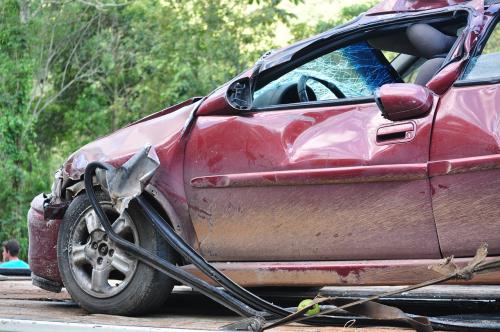How Is Fault Determined in a Car Accident

How Fault is Determined in a Car Accident: A Guide to Navigating the Process
Car accidents are unfortunate events that can cause physical, emotional, and financial stress. When you’re involved in a car accident, determining who is at fault is crucial, as it impacts insurance claims, legal proceedings, and compensation. But how exactly is fault determined in a car accident? This blog will explain the key elements involved in establishing fault, offering insights into how insurance companies and courts approach the matter.
Understanding Fault in Car Accidents
The fault in a car accident refers to the party responsible for causing the collision. Determining fault is important because it helps decide which driver’s insurance will cover medical expenses, vehicle damage, and other associated costs. In most cases, fault is determined based on negligence, which means a driver’s failure to exercise reasonable care while operating a vehicle.
In the United States, fault determination can vary depending on the state you’re in. There are two main systems used for determining fault: comparative negligence and contributory negligence.
- Comparative Negligence: Most states use this system, where the degree of fault is assigned to each driver based on their actions during the accident. If one driver is 70% at fault and the other is 30% at fault, the driver who is 70% at fault will be liable for a larger portion of the damages.
- Contributory Negligence: Some states follow this system, where a party that is found even slightly at fault may be barred from receiving any compensation, even if they were only partially responsible for the accident.
No matter the legal system in place, the key elements of fault determination generally include negligence, evidence, and the sequence of events that led to the accident.
In Texas, fault is determined using a modified comparative negligence rule, also known as the 51% Bar Rule. If you're found to be more than 50% at fault for a car accident, you cannot recover any damages. If you're 50% or less at fault, you can still recover compensation, but your percentage of fault will reduce it.
Gathering Evidence and Key Factors in Fault Determination
One of the primary ways to determine fault in a car accident is by gathering evidence. Evidence plays a crucial role in reconstructing the events that took place before and during the collision. This evidence can include:
- Police Reports: Police are called to the scene of many car accidents, especially those that result in injury. A police report often contains an official account of the incident, including statements from drivers and witnesses, traffic citations, and details about the conditions surrounding the crash. Insurance companies and courts heavily rely on police reports when determining fault.
- Witness Statements: Eyewitnesses can provide valuable information regarding how the accident unfolded. Witness statements are often taken by law enforcement at the scene or by your insurance company when filing a claim.
- Photos and Videos: Visual evidence is powerful in any legal case. Photos of the accident scene, vehicle damage, traffic signs, weather conditions, and other details can all play a role in determining fault. In some cases, surveillance footage or dashcam videos can also provide clear visual evidence of what happened.
- Driver Statements and Testimonies: After the accident, drivers may provide statements explaining their version of events. The credibility of these statements can significantly impact the outcome of fault determination. Drivers might also be required to testify in court if a lawsuit arises.
- Traffic Laws: Violations of traffic laws, such as running a red light, failing to stop at a stop sign, speeding, or distracted driving, can serve as evidence of negligence. Traffic laws provide clear guidelines on how vehicles should operate, and violating these rules can result in the determination that a driver is at fault.
If you’ve been involved in a car accident, it’s essential to gather all available evidence and document everything carefully. Doing so will strengthen your case and support a strong case for your side of the story.
How Insurance Companies Determine Fault
In many car accidents, insurance companies play a significant role in determining fault. After you file a claim with your insurer, they’ll investigate to evaluate the evidence and decide which driver was responsible for the collision.
Insurance companies typically rely on the following factors to determine fault:
- Damage Assessment: Insurers assess the damage to both vehicles to determine how the accident occurred. For example, rear-end collisions often suggest that the rear driver is at fault, while side-impact crashes may indicate the driver failed to yield the right of way. The severity of the damage and where it occurred can provide important clues.
- Driver Statements: Both drivers involved in the accident will provide statements about how the crash occurred. Insurance adjusters will review these statements to see if they align with the evidence.
- State Laws: Each state has its laws governing traffic accidents, and insurance companies must apply these laws to determine fault. In states with comparative negligence laws, insurers may assign percentages of fault to each driver based on the evidence and their investigation.
- Accident Reconstruction: In some cases, insurers may hire accident reconstruction experts to analyze the scene and recreate the accident. These experts consider factors like skid marks, vehicle positions, and traffic light timings to help determine which driver caused the accident.
It’s important to note that insurance companies often have their interests in mind when determining fault. If you feel that your insurer isn’t fair in assigning fault, you may need legal representation to protect your rights.
Why You Need Legal Help After a Car Accident
Navigating fault determination in a car accident can be complex, especially if you are dealing with injuries, significant vehicle damage, or disputes over who is at fault. In such cases, seeking legal assistance can help you pursue the compensation you may be entitled to.
A car accident lawyer can help you with:
- Investigating the Accident: An experienced attorney can help gather evidence, interview witnesses, and consult experts to strengthen your case.
- Negotiating with Insurance Companies: Insurance companies may not always act in your best interests. An attorney can handle negotiations and help you to pursue fair compensation for your damages.
- Representing You in Court: If the case goes to trial, a lawyer can represent you in court, providing professional legal expertise to present your case effectively.
- Filing a Lawsuit: If necessary, your attorney can assist with filing a lawsuit and pursuing a favorable outcome in a legal setting.
If you’ve been in a car accident and are unsure about fault or your rights, it’s critical to consult with a legal professional. At Ali Law Group, we specialize in car accident cases and will fight for your rights every step of the way.
Contact Ali Law Group for Legal Assistance
If you’ve been involved in a car accident and need help determining fault or seeking compensation, don’t navigate the complex legal process alone. Contact Ali Law Group today to schedule a consultation. Our team of experienced car accident attorneys is here to provide you with expert legal guidance and help you to receive the compensation you may be entitled to.
Disclaimer: The information provided on this blog is for informational purposes only and does not constitute legal advice. Every situation is unique, and the law can be complex. For specific legal guidance on your personal injury case in Texas, contacting an experienced attorney is essential. The Ali Law Group is not responsible for any actions taken based on the information contained here.















